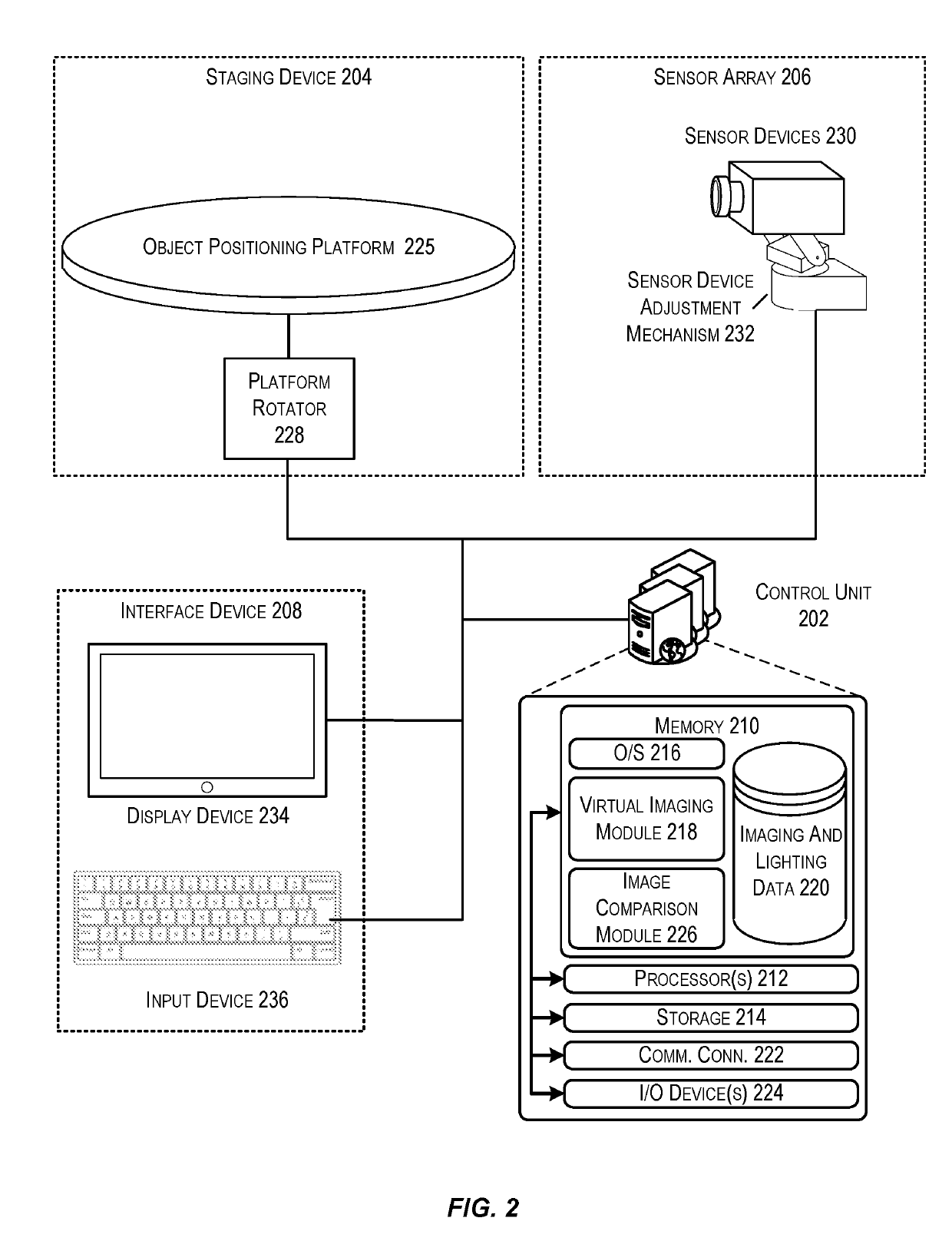Inverse rendering of visual material properties
a technology of visual material and properties, applied in the field of inverse rendering of visual material properties, can solve the problems of difficult to assess visual material properties, lack of realism of 3d models, and difficulty in assessing visual material properties
- Summary
- Abstract
- Description
- Claims
- Application Information
AI Technical Summary
Benefits of technology
Problems solved by technology
Method used
Image
Examples
Embodiment Construction
[0021]In the following description, various embodiments will be described. For purposes of explanation, specific configurations and details are set forth in order to provide a thorough understanding of the embodiments. However, it will also be apparent to one skilled in the art that the embodiments may be practiced without the specific details. Furthermore, well-known features may be omitted or simplified in order not to obscure the embodiment being described.
[0022]Techniques described herein are directed to a three-dimensional (3D) imaging system configured to generate a 3D model of an object using inverse rendering of material properties. The imaging system may iterate through a number of sections of an object when generating a 3D model of the object. In some embodiments, a range of material properties may be pre-defined and stored in the imaging system. Once an appropriate range of material properties is selected, the generation of the 3D model may occur in accordance with this r...
PUM
 Login to View More
Login to View More Abstract
Description
Claims
Application Information
 Login to View More
Login to View More - R&D
- Intellectual Property
- Life Sciences
- Materials
- Tech Scout
- Unparalleled Data Quality
- Higher Quality Content
- 60% Fewer Hallucinations
Browse by: Latest US Patents, China's latest patents, Technical Efficacy Thesaurus, Application Domain, Technology Topic, Popular Technical Reports.
© 2025 PatSnap. All rights reserved.Legal|Privacy policy|Modern Slavery Act Transparency Statement|Sitemap|About US| Contact US: help@patsnap.com



